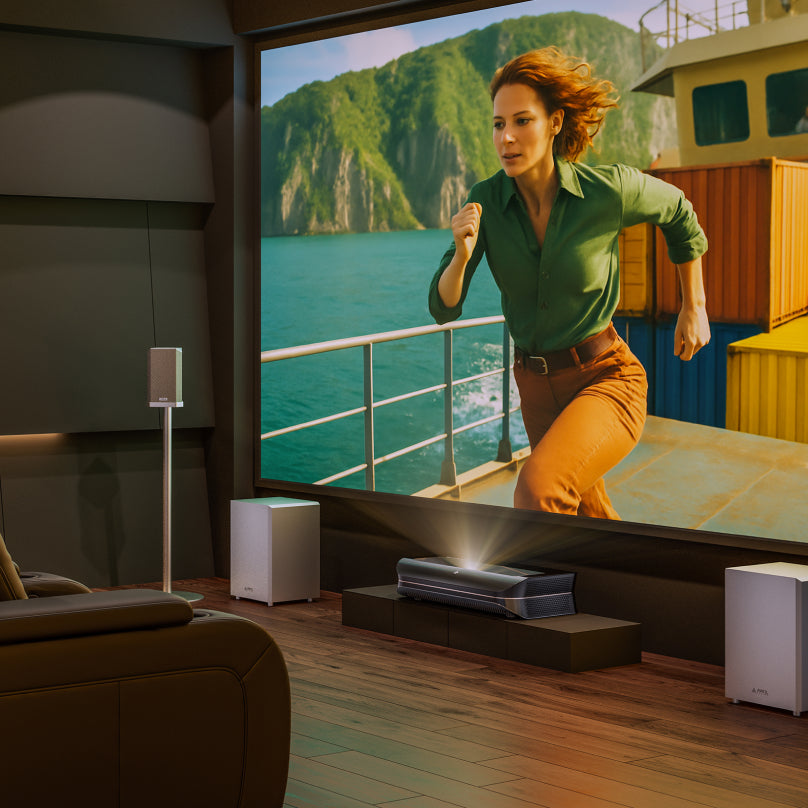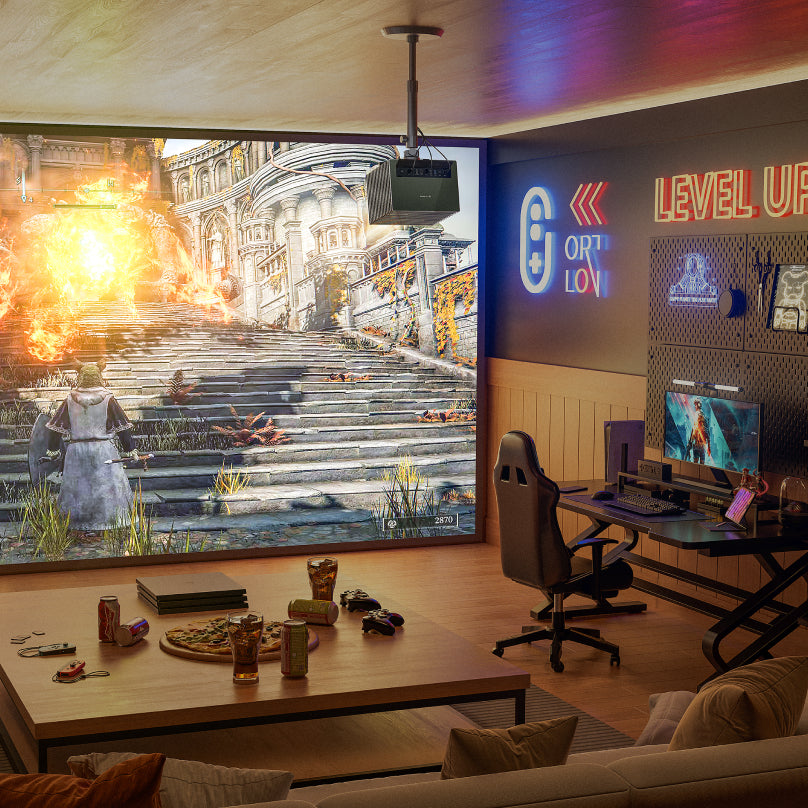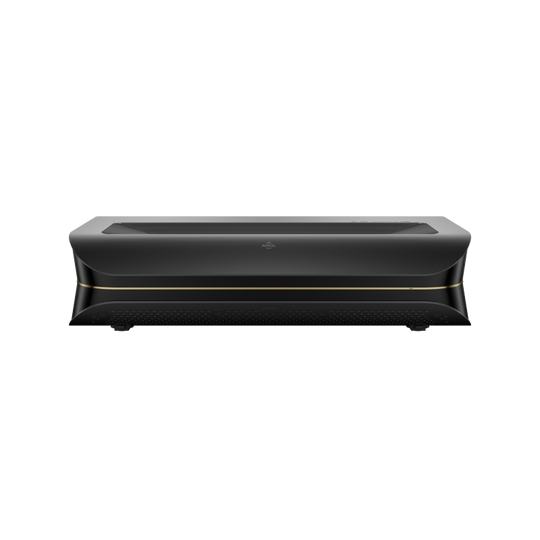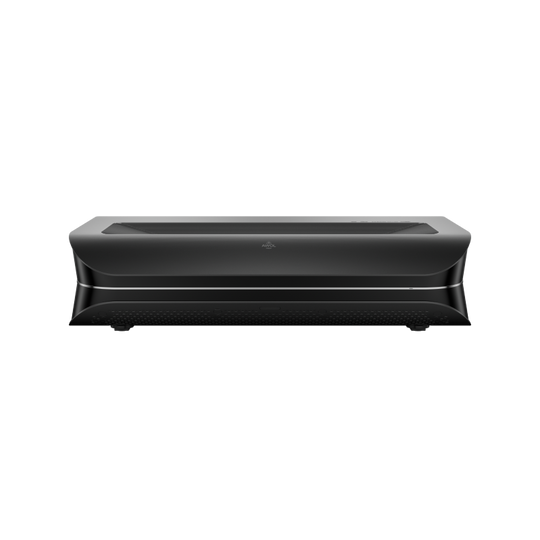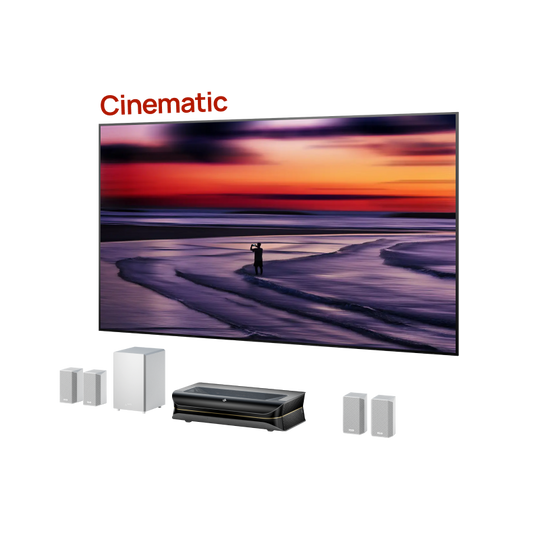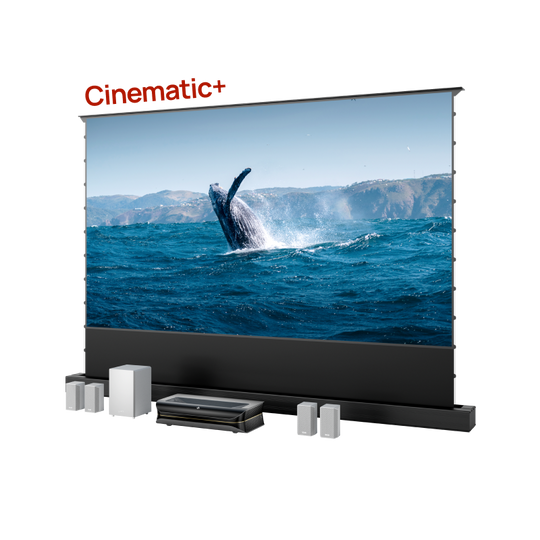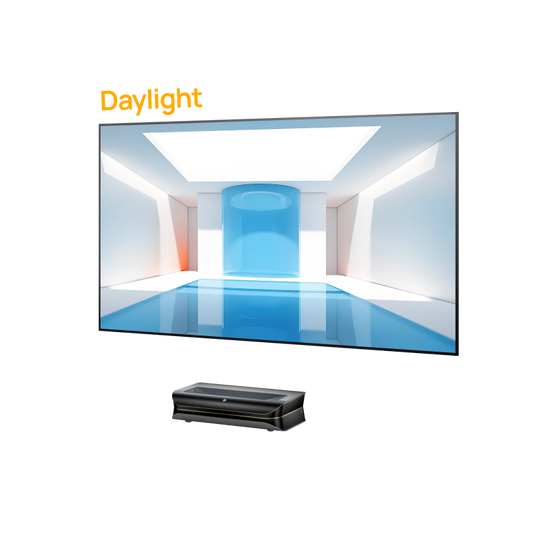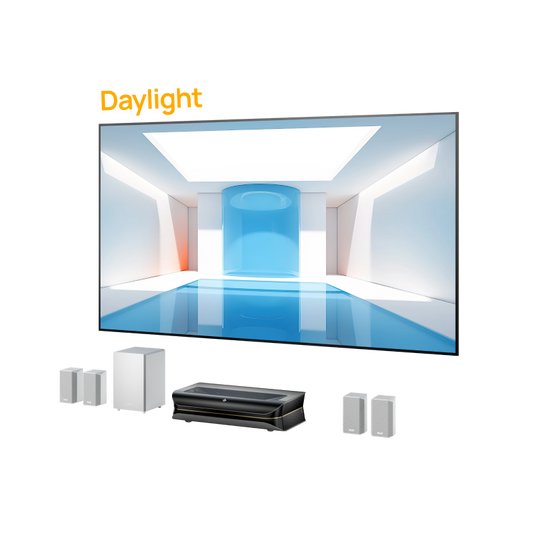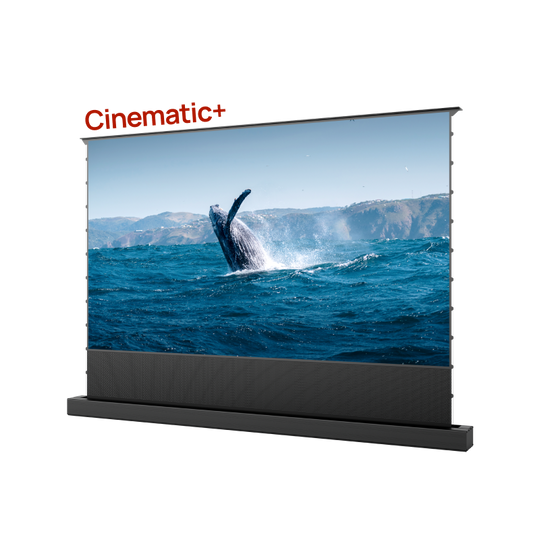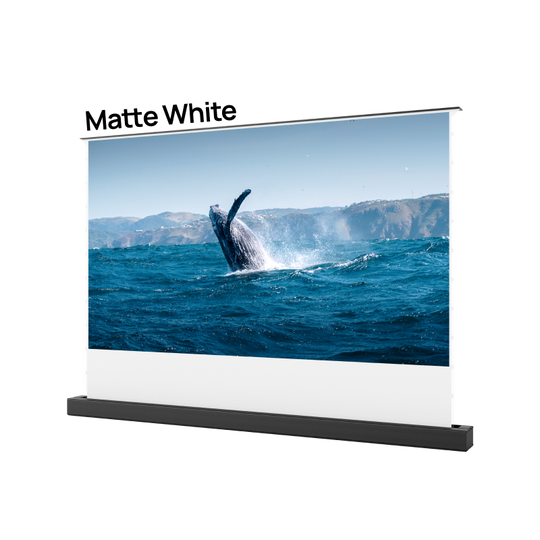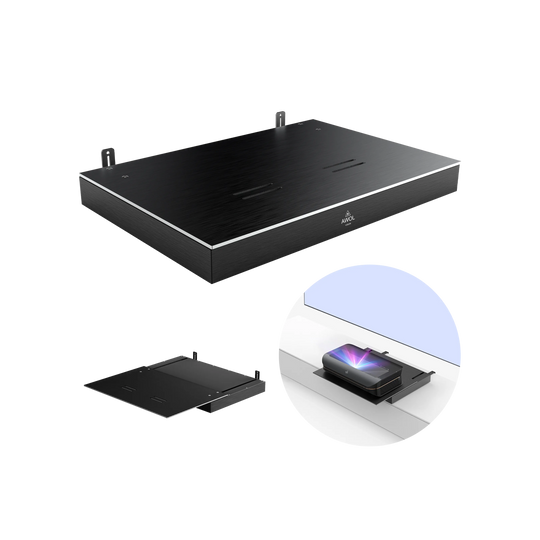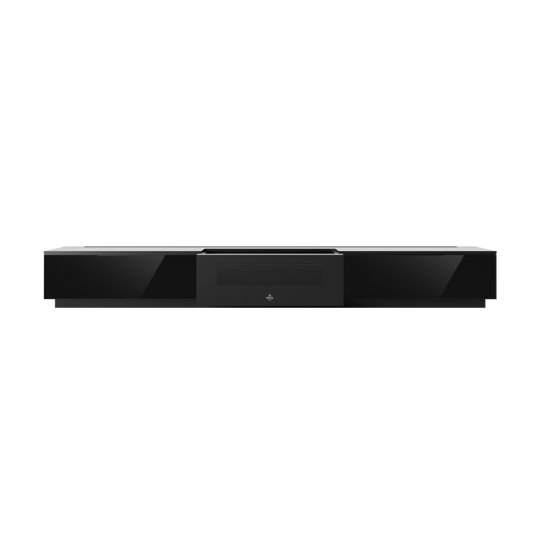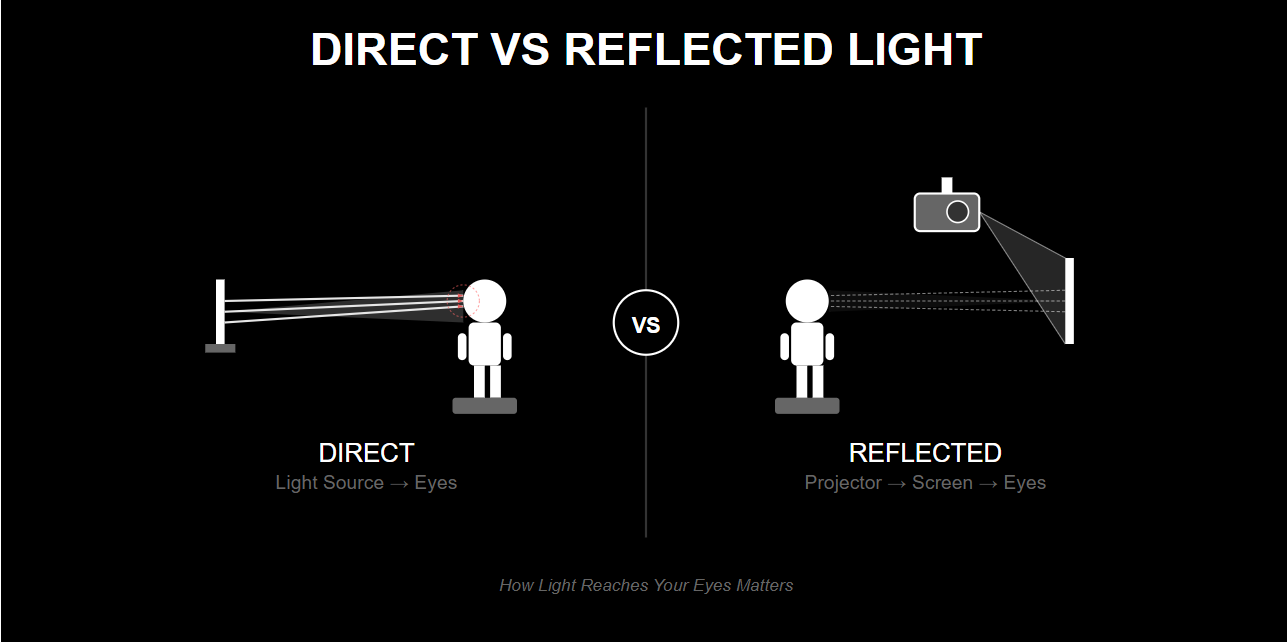Building a home theater in 2025 can feel like navigating a minefield of logos and acronyms. Dolby Atmos, DTS:X, IMAX Enhanced, Dolby Vision, HDR10+—each promises a revolutionary leap in performance. But what do they actually mean? And how do they work together to create the immersive experiences you crave?
The truth is simple: the experience starts with the content. A great film is great regardless of the format. Technology's role is not to replace the story but to enhance it, to faithfully reproduce the creator's vision with breathtaking accuracy. The goal is to close the gap between the director's editing suite and your living room.
This guide is designed to be your clear, unbiased resource. We will decode the most important audio and video formats, explain how they compare, and provide a practical roadmap for choosing the right equipment to build a home theater that will thrill your senses for years to come.
Core Video Technologies: IMAX Enhanced vs. Dolby Vision

High Dynamic Range (HDR) has revolutionized picture quality, expanding the range of color and contrast far beyond what was previously possible. Within the world of HDR, two premium, branded experiences have emerged to offer the pinnacle of visual performance: IMAX Enhanced and Dolby Vision. This is the heart of the modern Dolby Cinema vs. IMAX debate for home users.
IMAX Enhanced
IMAX Enhanced is not a new video format, but rather a comprehensive certification program from the partnership of IMAX and DTS. It aims to bring the signature IMAX theatrical experience into the home by guaranteeing a certain level of performance from both content and hardware.
-
Expanded Aspect Ratio (EAR): This is the most visible benefit. Many modern blockbusters contain scenes filmed with special IMAX cameras. In a standard home release, these scenes are cropped, cutting off the top and bottom of the picture. The IMAX Enhanced version preserves the original 1.90:1 aspect ratio, filling more of your 16:9 screen and displaying up to 26% more of the original image—delivering the full scale and scope the director intended.
-
Proprietary Picture Mastering: Content undergoes IMAX’s Digital Media Remastering (DMR) process, which uses sophisticated algorithms to reduce image noise and grain, resulting in a cleaner, sharper, and more vibrant picture optimized for large home displays.
Dolby Vision
Dolby Vision is the leading premium HDR format, focused on delivering the most accurate picture possible on a scene-by-scene, or even frame-by-frame, basis.
-
Dynamic Metadata: Standard HDR (HDR10) uses static metadata, applying one set of picture instructions for an entire film. Dolby Vision uses dynamic metadata, which acts as a continuous guide, telling the display precisely how to optimize brightness, contrast, and color for every single moment. This ensures maximum detail in both the darkest shadows and the brightest highlights.
-
Superior Color Depth: Dolby Vision supports up to 12-bit color depth, allowing for over 68 billion colors. This results in incredibly smooth color gradients, eliminating the distracting "banding" that can sometimes appear in skies or subtle shadows on 10-bit formats.
Direct Comparison: Picture Quality
|
Feature |
IMAX Enhanced |
Dolby Vision |
|
Primary Goal |
Recreate the IMAX theatrical experience. |
Achieve the most accurate, optimized picture possible. |
|
Key Technology |
Expanded Aspect Ratio (1.90:1), DMR Mastering. |
Dynamic Metadata (Frame-by-frame), 12-bit Color. |
|
Visual Impact |
A larger, more immersive image that fills the screen. |
Superior detail, contrast, and color fidelity in every scene. |
|
Availability |
A curated collection on Disney+, certain streaming services, and 4K Blu-ray. |
The dominant premium HDR format on Netflix, Disney+, Apple TV+, and 4K Blu-ray. |
Immersive Audio Technologies: Dolby Atmos vs. DTS:X

Immersive audio has added a third dimension to sound: height. By placing sound overhead, these formats create a true dome of sound that envelops the listener, moving beyond the flat, two-dimensional plane of traditional 5.1 and 7.1 surround sound.
Dolby Atmos
Dolby Atmos is the most widely adopted immersive audio format, representing a paradigm shift from channel-based to object-based audio. Instead of assigning a sound to a specific speaker, sound designers can place it as a discrete "object" in a 3D space. An Atmos-enabled AV receiver then acts as a real-time rendering engine, analyzing this data and intelligently mapping the sound to your specific speaker layout. This allows for breathtakingly precise placement and movement of sounds—like a helicopter flying seamlessly overhead.
DTS:X
DTS:X is the primary competitor to Dolby Atmos and is also a flexible, powerful object-based audio system. Its most significant practical advantage is its flexibility with speaker layouts. While Dolby has specific recommendations for optimal speaker placement, the DTS:X renderer is designed to be "agnostic," adapting and optimizing the sound for almost any reasonable speaker configuration. The special "IMAX Signature Sound" is delivered via a unique variant of the DTS:X codec.
Practical Comparison: The Home Audio Experience
For most users, both Dolby Atmos and DTS:X deliver a spectacular immersive experience. The choice often comes down to content availability and system philosophy. Dolby Atmos is ubiquitous on streaming services, making it the de facto standard. DTS:X is a staple on 4K UHD Blu-rays and is the exclusive audio format for the IMAX Enhanced experience. Both formats are supported by most modern AV receivers, so users often don't have to choose one over the other when selecting from the best home theater sound systems.
The Ecosystem: How Video and Audio Formats Coexist
One of the biggest points of confusion for consumers is whether these formats are strict competitors. The answer is: not always. In a modern home theater, they often work together.
-
Beyond Competition: A Collaborative System: It's a mistake to think you must choose a system that is "only" Dolby or "only" DTS/IMAX. The goal is to build a system that can decode and play as many high-quality formats as possible.
-
Hardware Synergy: A single high-performance TV or projector can be certified to support multiple formats. For example, many modern TVs and projectors support both Dolby Vision and HDR10+.
-
Content Synergy: A single 4K UHD Blu-ray disc can contain multiple audio and video formats. It's common for a disc to feature an IMAX Enhanced picture while also offering both a DTS:X audio track and a separate Dolby Atmos audio track, allowing the user to select their preference.
The key is to understand your system's signal chain: the content source sends the data to your AV receiver or soundbar for decoding, which then sends the video to your display and the audio to your speakers. Getting this right is crucial, and you can learn more about how to connect a projector to a surround sound system in our detailed guide.
A Practical Buying Guide: Building Your Home Theater

With the technology explained, let's translate it into an actionable plan.
Step 1: Choosing Your Display (TV or Projector)

Your display is the visual centerpiece. In today's market, this often means choosing between a 4K projector vs a TV, with each having unique benefits. Once you've decided, the choice often comes down to which premium ecosystem you want to prioritize.
-
The IMAX Enhanced ecosystem offers a fantastic, curated experience with its signature expanded aspect ratio and powerful DTS sound, available on certified devices from a number of leading manufacturers.
-
For viewers who prioritize the ultimate in dynamic HDR performance and the vast content availability on major streaming services, Dolby Vision is the leading standard. A top-tier projector like the AWOL Vision LTV-3500 Pro is a prime example of a device built to master this ecosystem. Not only was it the first UST projector to incorporate Dolby Vision, but it also supports HDR10+, giving you the maximum possible HDR format flexibility. This makes it an ideal choice for building a system centered around the massive Dolby Vision libraries on Netflix, Disney+, and more.
Step 2: Selecting Your Audio System (Soundbar or AV Receiver)
Your audio device is the central nervous system of your theater. It decodes the audio formats and powers your speakers. Your choice between a streamlined soundbar or a full AV receiver will define your setup's complexity and power.
-
Ensure Format Support: Whether you choose a high-end soundbar or a full AV receiver, verify that it offers decoding for both Dolby Atmos and DTS:X.
-
Prioritize Connectivity with eARC: The Enhanced Audio Return Channel (eARC) is a non-negotiable feature of the HDMI 2.1 specification. It is the only way to send high-resolution, lossless audio (like the Dolby Atmos found on a Blu-ray) from your TV or a directly connected device back to your audio system. A modern display like the AWOL Vision LTV-3500 Pro correctly implements eARC, allowing it to pass through the highest quality audio formats to your receiver or soundbar without compromise.
Step 3: Considering Your Content Source (Streaming vs. Physical Media)

Where you get your movies and shows from has a massive impact on quality.
-
Streaming: Offers incredible convenience and is the primary source for Dolby Vision and Dolby Atmos content. However, to save bandwidth, the audio and video are compressed. You can explore this topic further in our ultimate guide to streaming with your projector.
-
Physical Media (4K UHD Blu-ray): For the absolute best performance, physical media is still king. The much higher data rates allow for less video compression and lossless audio codecs (Dolby TrueHD, DTS-HD Master Audio) that are bit-for-bit identical to the studio master.
Conclusion: Matching Technology to Your Content and Budget
The "format wars" can be intimidating, but the reality for consumers in 2025 is a market filled with incredible options. The key is to remember that technology's sole purpose is to serve the content you love.
Building a truly future-proof system comes down to a few key principles: prioritize connectivity like HDMI 2.1 with eARC, invest in hardware that supports multiple formats, and build a balanced system where your display, audio, and sources are all of a similar high caliber.
Ultimately, the choice between the curated, large-scale experience of IMAX Enhanced and the stunning, widely-available fidelity of the Dolby ecosystem is a personal one. By understanding their strengths, you can make an informed investment and build a home theater that delivers a breathtaking, immersive escape every time you press play.
